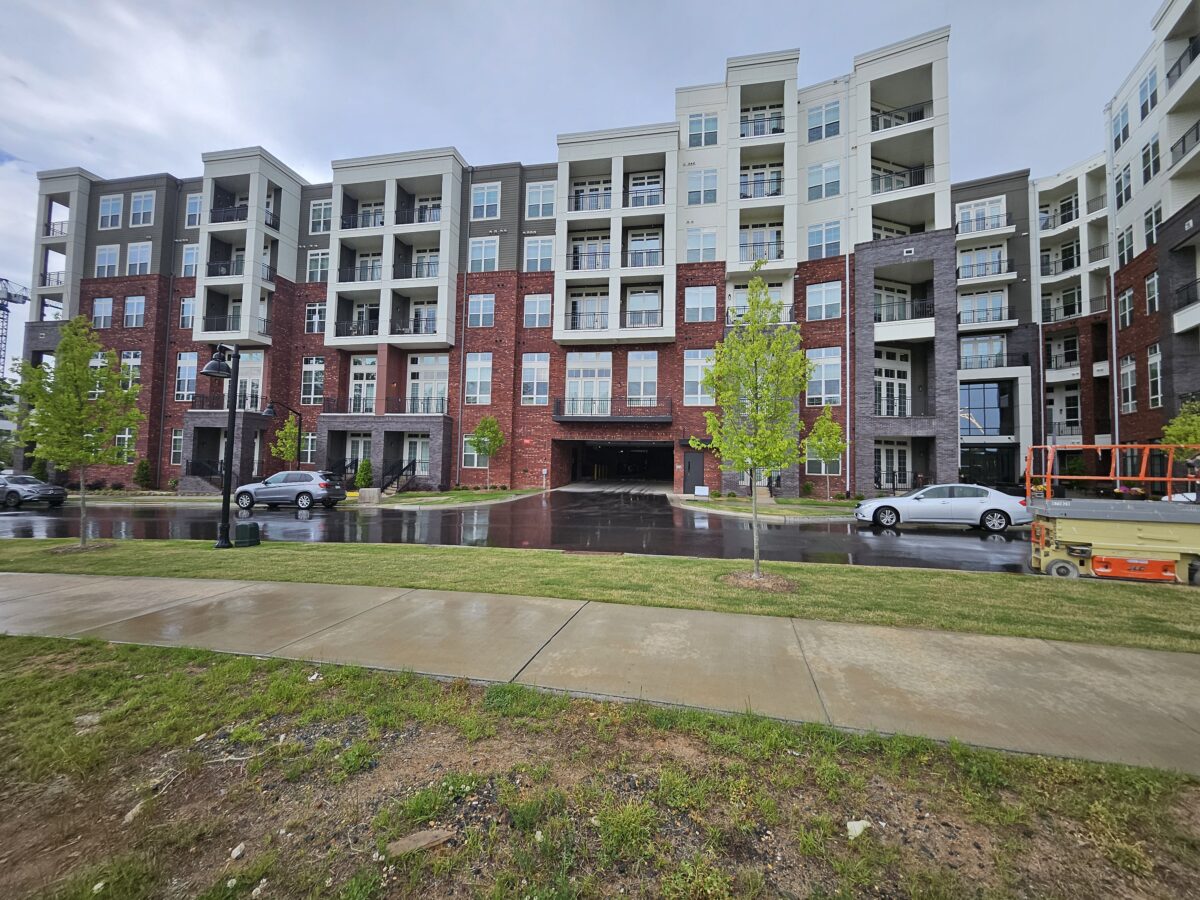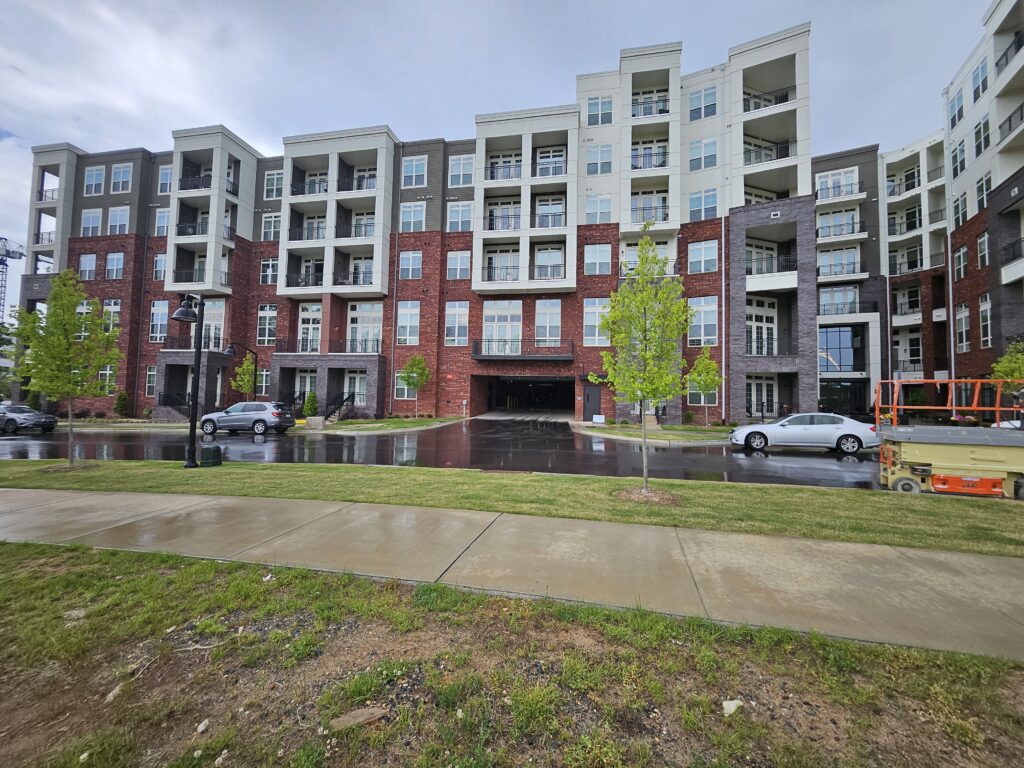
An often-heard complaint about development in Chapel Hill (and there are a lot of complaints about development in Chapel Hill) is that all of the new mid-rise, multi-family buildings look alike. As it happens, there’s a great deal of truth to this. Why? It’s largely because of a type of construction known as stick-frame over podium, five-over-two, or just stick built construction.
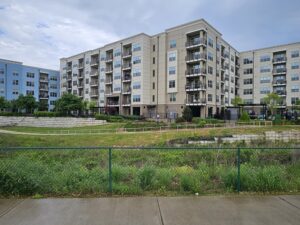
These buildings have been (or are being) built all over town: several, including the Berkshire and the Bell Chapel Hill in the Blue Hill district, Carolina Square in the Downtown, the Aura on MLK Blvd., and the new apartments under construction on Willow Drive as part of the University Mall redevelopment, just to name a few.
In essence, these are buildings consisting of a one- or two-story concrete podium surmounted by three to five stories of wood framed apartments (or other similar uses, but almost never offices). It’s almost as if we were stacking three to five floors of single-family homes on top of one another. And because of various limitations these buildings are almost never taller than seven stories. The wood in these buildings is treated for fire protection and the buildings are generally sprinklered, as well.
This type of construction is a relatively recent phenomenon, particularly in Chapel Hill, where large multi-family, mid-rise buildings were nearly unknown until about 15 years ago. The origins of this type of construction are somewhat murky, but the first substantial buildings constructed in this manner appear to date to the mid-1990s on the West Coast. Since then, this form of construction has come to represent a very substantial fraction of new apartment construction in the U.S.
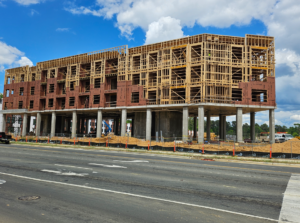
There are a number of reasons why stick-frame has become so popular, the main one being cost. It is estimated that these buildings are between 20 and 40 percent less costly than comparable buildings made of concrete, steel, or masonry. They are also significantly faster to build, particularly because many of the wood components can be pre-built elsewhere and then assembled on site. Wood is also a forgiving material to work with and errors in construction or assembly can be easily and cheaply corrected.
The main disadvantage to this kind of construction is the most obvious one – sameness. These buildings tend to look alike because the construction type – and the desire for low construction costs – limits architectural options (although it certainly doesn’t completely preclude them). Because the wood walls are weight bearing and solid, there are real limitations on the size and number of windows that can be included. Curtain walls of any type are not an option and so the main type of external variability is how the wood walls are clad.
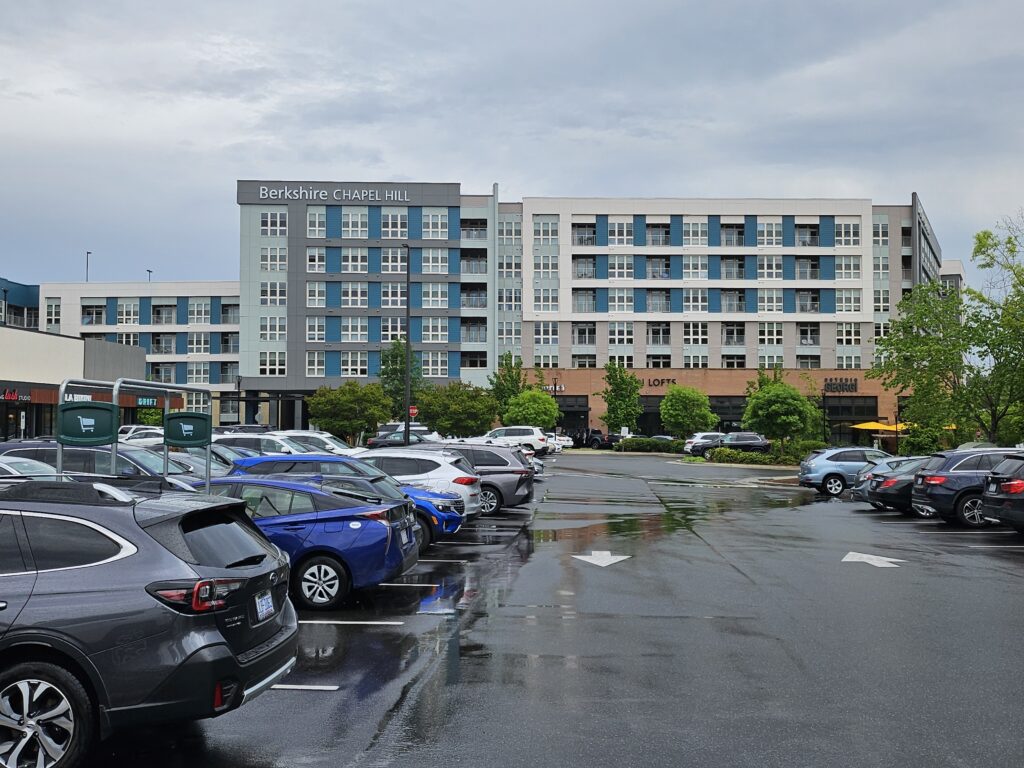
There are some who would have these buildings banned or severely restricted. In North Carolina that is simply not an option. They are permitted in the State building code and local jurisdictions are not allowed to override that code.
And these buildings are far from being all bad. At a time when Chapel Hill and the U.S. are in dire need of more housing, five over twos represent one of the more cost-effective ways of obtaining it. And while jurisdictions can not ban them, they can regulate them in ways to make them far more appealing. An architect friend of mine once told me that the key to good architecture is what is done with the space between buildings. We can call for more green spaces, better public amenities, improved connectivity, and the like to create better places and spaces. We can also require variety in materials (to an extent) and features such as setbacks, better ground floor activation, and variety in building fronts. While these kinds of regulations may not create architectural gems, it can help us obtain much-needed housing in a way that is pleasing to our community.
Author’s note: This piece draws heavily on an article entitled “Why America’s New Apartment Buildings All Look the Same,” written by Justin Fox and published in the February 13, 2019, issue of Business Week. The opinions and errors are solely mine, however.

